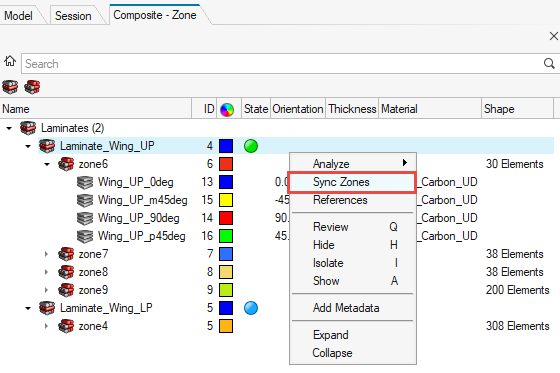Composites
New Features
- Sequence Entity
- Define commonly reused lists of plies, for example [-45/0/45/90], in a sequence entity. This can be dragged-and-dropped along with any other individual plies into a laminate for stacking.
- Zone Sync
- Zones in the Zone View of the Composite Browser are now synced manually upon request. Previously, this was done automatically which could cause performance issues during laminate stacking.
- Composite Stress Toolbox
- You can now create and analyze a flat composite plate with parametric
dimensions, a given laminate, an edge load, and boundary conditions from
a single dialog. The tool is available in the OptiStruct solver
interface, and it requires an OptiStruct installation to run the
analysis. Results are loaded automatically after the analysis.
Figure 2. 
Enhancements
- Radioss PHI orientation method with property/laminate IP=20 is now the standard shell orientation method in the Radioss solver. This is supported for both orientation apply and review operations in the Composite Browser. Orientation review methods for previous Radioss block versions are still supported.
- Duplicate laminate functionality: upon laminate duplication, plies stacked in the laminate are also duplicated and their ply shapes are cleared.
- *updatestackedentities API for all laminate, sequence and ply stacking operations
Resolved Issues
- Performance working with composite entities in large models. Drag-and-drop ply stacking, show/hide/isolate, undo/redo operations, and component view invoke are all significantly faster.
- Absorb properties if more than one laminate is required.
Known Issues
- Ply shape realization for shapes which are significantly larger than target mesh.
- .h5 Fibersim/Catia Composite Link import/export for multiple laminates.
- Derived load cases not yet supported.
- Load response contouring does not fully support symmetric laminates. While element contour already takes symmetry into account fully, the ply wise result selection is lacking the symmetric layers.
- Contouring load response for PCOMPG relies on layer index instead of global ply ID.
- Error messaging for analysis of elements with PSHELL property lacks details for some corner cases.
